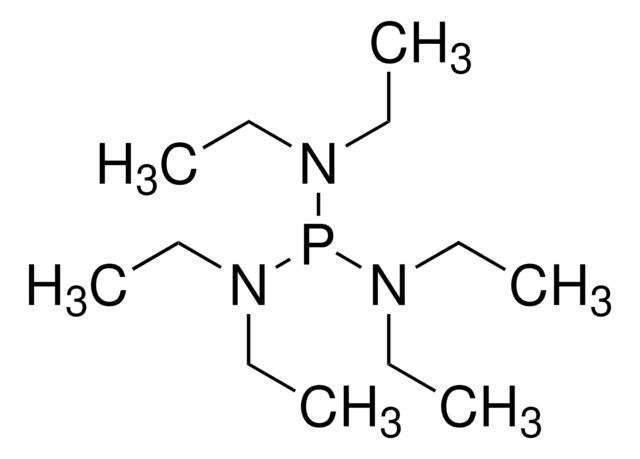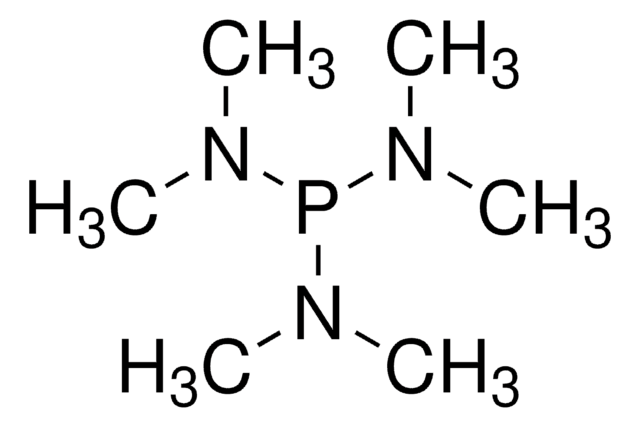718165
Trioctylphosphine
97%
Sinônimo(s):
TOP, P(Oct)3
About This Item
Produtos recomendados
Nível de qualidade
Ensaio
97%
forma
liquid
adequação da reação
reaction type: Buchwald-Hartwig Cross Coupling Reaction
reaction type: Heck Reaction
reaction type: Hiyama Coupling
reaction type: Negishi Coupling
reaction type: Sonogashira Coupling
reaction type: Stille Coupling
reaction type: Suzuki-Miyaura Coupling
reagent type: ligand
índice de refração
n20/D 1.468 (lit.)
pb
284-291 °C/50 mmHg (lit.)
densidade
0.831 g/mL at 25 °C (lit.)
grupo funcional
phosphine
cadeia de caracteres SMILES
CCCCCCCCP(CCCCCCCC)CCCCCCCC
InChI
1S/C24H51P/c1-4-7-10-13-16-19-22-25(23-20-17-14-11-8-5-2)24-21-18-15-12-9-6-3/h4-24H2,1-3H3
chave InChI
RMZAYIKUYWXQPB-UHFFFAOYSA-N
Procurando produtos similares? Visita Guia de comparação de produtos
Descrição geral
Aplicação
Palavra indicadora
Danger
Frases de perigo
Declarações de precaução
Classificações de perigo
Eye Dam. 1 - Skin Corr. 1B
Código de classe de armazenamento
8A - Combustible corrosive hazardous materials
Classe de risco de água (WGK)
WGK 2
Ponto de fulgor (°F)
296.6 °F - closed cup
Ponto de fulgor (°C)
147 °C - closed cup
Escolha uma das versões mais recentes:
Já possui este produto?
Encontre a documentação dos produtos que você adquiriu recentemente na biblioteca de documentos.
Os clientes também visualizaram
Nossa equipe de cientistas tem experiência em todas as áreas de pesquisa, incluindo Life Sciences, ciência de materiais, síntese química, cromatografia, química analítica e muitas outras.
Entre em contato com a assistência técnica












